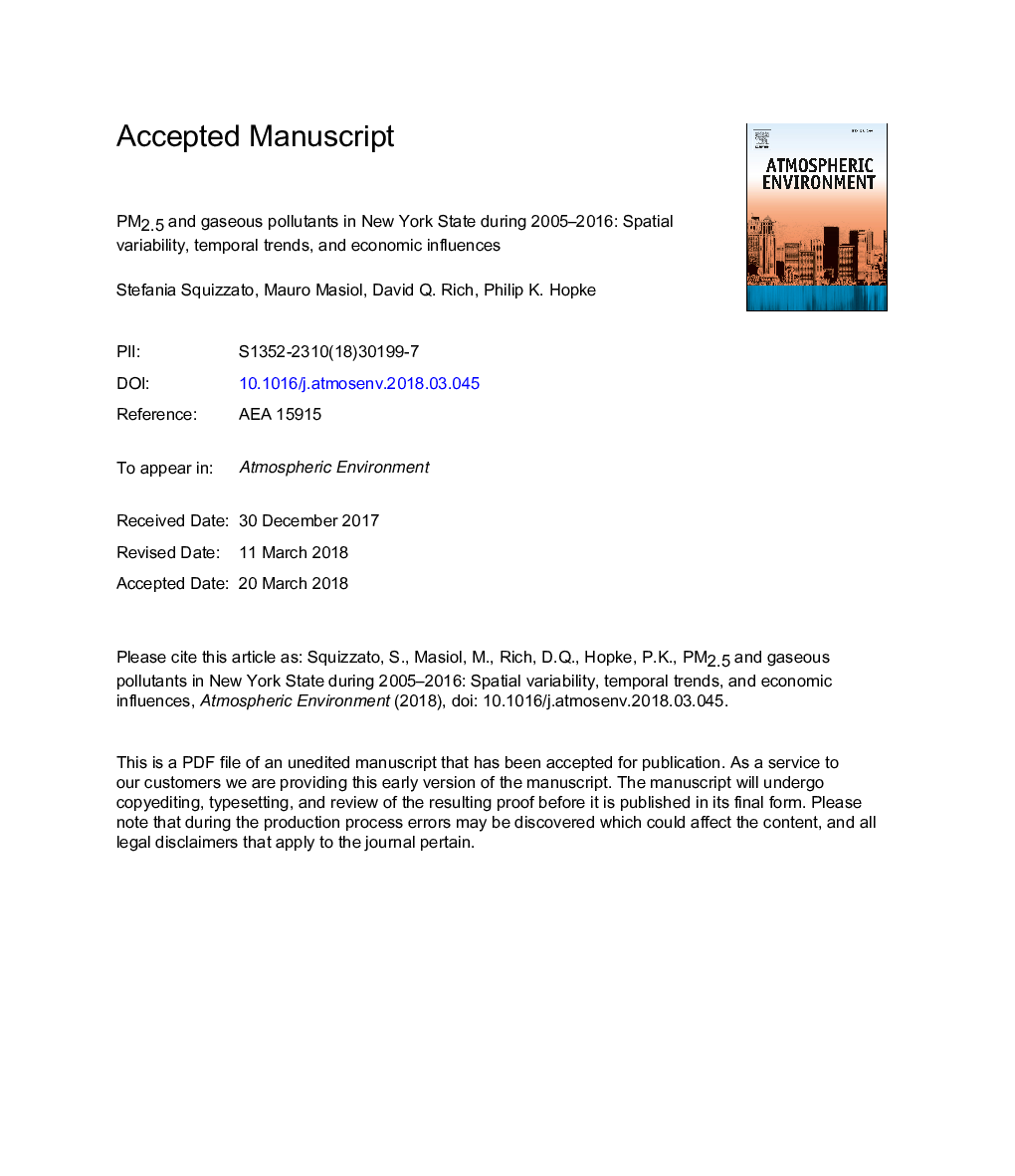| Article ID | Journal | Published Year | Pages | File Type |
|---|---|---|---|---|
| 8863841 | Atmospheric Environment | 2018 | 34 Pages |
Abstract
Over the past decades, mitigation strategies have been adopted both by federal and state agencies in the United States (US) to improve air quality. Between 2007 and 2009, the US faced a financial/economic crisis that lowered activity and reduced emissions. At the same time, changes in the prices of coal and natural gas drove a shift in fuels used for electricity generation. Seasonal patterns, diel cycles, spatial gradients, and trends in PM2.5 and gaseous pollutants concentrations (NOx, SO2, CO and O3) monitored in New York State (NYS) from 2005 to 2016 were examined. Relationships between ambient concentrations, changes in NYS emissions retrieved from the US EPA trends inventory, and economic indicators were studied. PM2.5 and primary gaseous pollutants concentrations decreased across NYS. By 2016, PM2.5 and SO2 attained relatively homogeneous concentrations across the state. PM2.5 concentrations decreased significantly at all sites. Similarly, SO2 concentrations declined at all sites within this period, with the highest slopes observed at the urban sites. Reductions in NOx emissions likely contributed to summertime average ozone reductions. NOx and VOCs controls reduced O3 peak concentrations as seen in significant relationships between the annual O3 4th-highest daily maximum 8-h concentrations and estimated NOx emissions at rural and suburban sites (r2 â¼ 0.7). Spring maxima were not reduced with most sites showing insignificant slopes or significant positive slopes (e.g., +2.6% yâ1 and +2% yâ1, at CCNY and PFI, respectively). Increases in autumn and winter ozone concentrations were found (e,g., 6.6â¯Â±â¯0.4% yâ1 on average in New York City). Significant relationships were observed between PM2.5, primary pollutants, and economic indicators. Overall, a decrease in electricity generation with coal, and the simultaneous increase in natural gas consumption for power generation, led to a decrease in PM2.5 and gaseous pollutants concentrations.
Related Topics
Physical Sciences and Engineering
Earth and Planetary Sciences
Atmospheric Science
Authors
Stefania Squizzato, Mauro Masiol, David Q. Rich, Philip K. Hopke,
